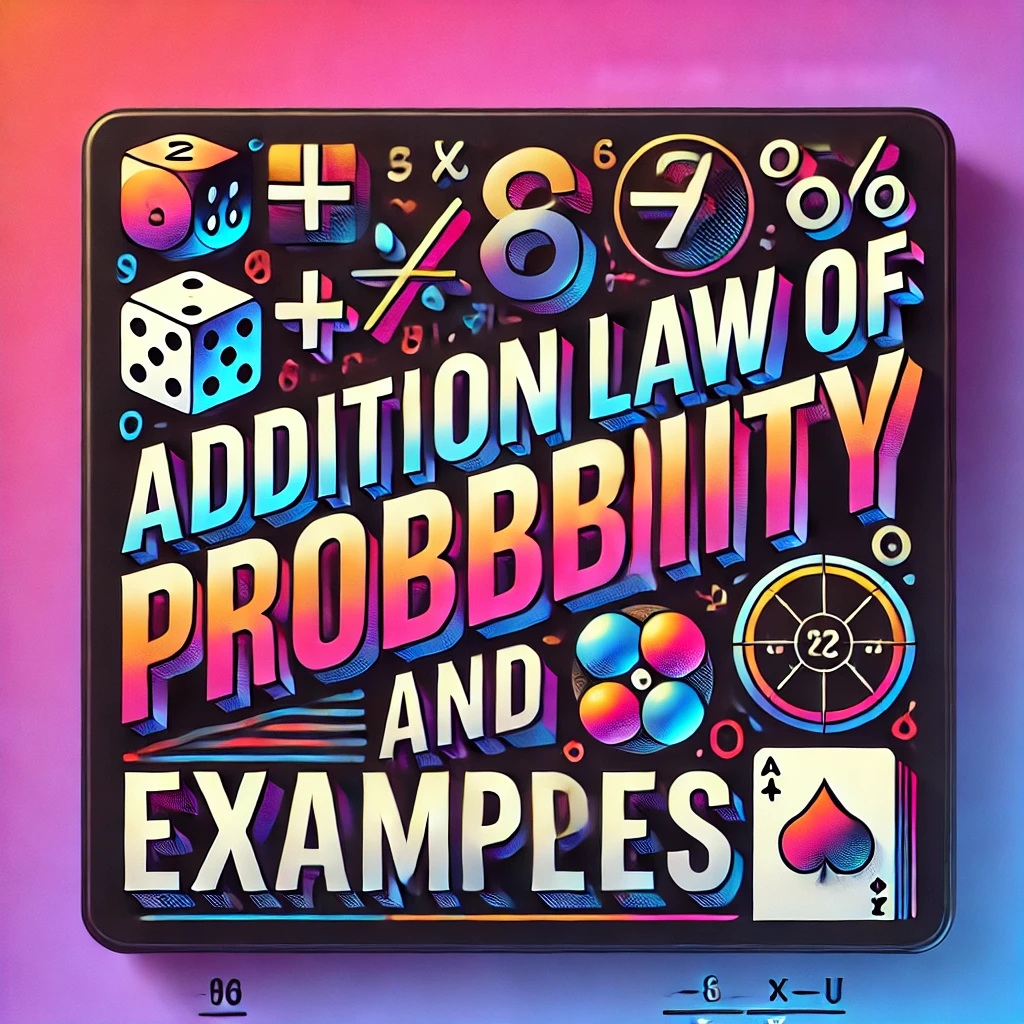Addition Law of Probability and Examples
Data Science and A.I. Lecture Series
Introduction to Addition Law
Statement:
For any two events \( A \) and \( B \), the probability of their union is given by:
\[
P(A \cup B) = P(A) + P(B) – P(A \cap B)
\]
- This formula calculates the probability of either \( A \), \( B \), or both occurring.
- The term \( P(A \cap B) \) adjusts for the overlap counted twice in \( P(A) + P(B) \).
Example 1: Playing Cards
Problem: From a pack of 52 playing cards, one card is drawn at random. What is the probability that it is a jack of spades or a queen of hearts?
- Total cards = 52.
- \( P(A) = \frac{1}{52} \): Probability of a jack of spades.
- \( P(B) = \frac{1}{52} \): Probability of a queen of hearts.
- \( P(A \cap B) = 0 \): No overlap between these events.
Using the formula:
\[
P(A \cup B) = P(A) + P(B) – P(A \cap B)
\]
Substitute values:
\[
P(A \cup B) = \frac{1}{52} + \frac{1}{52} – 0 = \frac{2}{52} = \frac{1}{26}
\]
Example 2: Lottery Tickets
Problem: 25 lottery tickets are marked with the first 25 numerals. A ticket is drawn at random. Find the probability that it is a multiple of 5 or 7.
- Total tickets = 25.
- Multiples of 5: \( 5, 10, 15, 20, 25 \) (\( n = 5 \)).
- Multiples of 7: \( 7, 14, 21 \) (\( n = 3 \)).
- Common multiples (5 and 7): (\( n = 0 \)).
Using the formula:
\[
P(A \cup B) = P(A) + P(B) – P(A \cap B)
\]
Substitute values:
\[
P(A \cup B) = \frac{5}{25} + \frac{3}{25} – \frac{0}{25} = \frac{8}{25}
\]
Example 3: Rolling a Die
Problem: Find the probability of getting either a number multiple of 3 or a prime number when a fair die is thrown.
- Total outcomes = 6 (\( 1, 2, 3, 4, 5, 6 \)).
- Multiples of 3: \( 3, 6 \) (\( n = 2 \)).
- Prime numbers: \( 2, 3, 5 \) (\( n = 3 \)).
- Common outcomes: \( 3 \) (\( n = 1 \)).
Using the formula:
\[
P(A \cup B) = P(A) + P(B) – P(A \cap B)
\]
Substitute values:
\[
P(A \cup B) = \frac{2}{6} + \frac{3}{6} – \frac{1}{6} = \frac{4}{6} = \frac{2}{3}
\]
Example 4: Opening a Page
Problem: There are 40 pages in a book. A page is opened at random. Find the probability that the number of this opened page is a multiple of 3 or 5.
- Total pages = 40.
- Multiples of 3: \( 3, 6, 9, \dots, 39 \) (\( n = 13 \)).
- Multiples of 5: \( 5, 10, 15, \dots, 40 \) (\( n = 8 \)).
- Common multiples: \( 15, 30 \) (\( n = 2 \)).
Using the formula:
\[
P(A \cup B) = P(A) + P(B) – P(A \cap B)
\]
Substitute values:
\[
P(A \cup B) = \frac{13}{40} + \frac{8}{40} – \frac{2}{40} = \frac{19}{40}
\]
Conclusion
- The Addition Law of Probability simplifies the calculation of probabilities for unions of events.
- It adjusts for overlaps to avoid double counting.
- Examples demonstrate its versatility in real-world problems, from playing cards to lottery tickets.
Reach PostNetwork Academy
Website: www.postnetwork.co
YouTube Channel: www.youtube.com/@postnetworkacademy
Facebook Page: www.facebook.com/postnetworkacademy
LinkedIn Page: www.linkedin.com/company/postnetworkacademy
Thank You!
